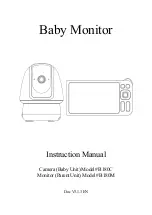
S7999B SYSTEM DISPLAY
63
65-0283—2
a
It is possible that a random external electrical noise event has caused a fault checking algorithm to be detected. Resetting the
control will allow recalculation of the fault and, provided it is not a hard failure, the device will continue to operate. If the condition
will not clear, the control must be replaced.
b
Check AC waveform, severe noise on AC lines can corrupt the sampling of AC signals.
c
Verify actuator total resistance and wiper measurements, check the ability of the actuator to travel full stroke using the Manual
override buttons within the actuator. Verify input power to the actuator. If actuator is not functioning, replace the actuator.
d
Verify a short does not exist at terminal 14. The control will need replacement if a sustained fault code 34 exists after the noted
items 1 and 2 have been performed. Fuse line voltage power to control system with type SC15 fuse or fuse Limit input (terminal
13) with type SC5 fuse.
e
Conditional Alarm. Causes the alarm output to be energized. The system may still be operating but requires attention in order to
modulate or to proceed with the lightoff sequence. The actuators would be positioned at lightoff point, minimum modulation
point or maximum modulation point, dependent on what the particular fault is and when the fault is introduced relative to the
R7999 operating state.
91
The 4 to 20 mA firing rate input is below 3 mA, Out of
Range—Low. (Actuators return to or remain at the
minimum modulation point with the alarm on; the
control remains operational only to the extent that
Minimum Modulation firing operation is allowed.)
Not supported on Version 1.2 controllers.
Check CmA+- input (Terminals 39 and 40) for proper operation
polarity and range. The input must be within 3.0 mA to 21.0 mA.
The voltage at this terminal must be within 0.7 to 5.0 Vdc,
respectively.
Conditional Alarm—Alarm output is energized; controller
continues to run.
e
92
The manual potentiometer rate input is higher than
an allowable range, i.e., Out of Range—High. (The
actuators move to the maximum modulation point
with alarm on, control will remain operable, yet when
MANUAL MODE is selected, maximum modulation
and alarm output shall occur.) Auto mode operation is
not
affected.
Not supported on Version 1.2 controllers.
The manual potentiometer is out of range high. Make sure a
5000 ohm (±10%) potentiometer is being used and wiring to it is
correct. Shielded cable is recommended.
Conditional Alarm—Alarm output is energized; controller
continues to run.
e
93
The auxiliary 4 to 20 mA input must be below 3. mA
when configured for use. (The actuators return or
remain at the minimum modulation point with alarm
on, the control will remain operable only to the extent
that Minimum Modulation firing operation is allowed.
Not supported on Version 1.2 controllers.
Check XmA+- input (Terminals 37 and 38) for proper operation
polarity and range. The input must be within 3.0 mA to 21.0 mA.
The voltage at this terminal must be within 0.7 to 5.0 Vdc,
respectively.
Conditional Alarm—Alarm output is energized; controller
continues to run.
e
94
After LCO is set by the R7999, the Burner Control
must provide a Lightoff or Purge request within 20
seconds. (Controller remains in a processing demand
condition indefinitely, waiting for valid inputs on the
LF, MV and HF inputs; the alarm sounds after the 20-
second period expires.)
Not supported on Version 1.2 controllers.
Check burner control interface wiring and burner control
operation (Terminals 10, 11, 12). The R7999 is waiting for a
command via these terminals.
Conditional Alarm—Alarm output is energized; controller
continues to run.
e
Table 7. Fault Codes and Corrective Actions. (Continued)
Fault/
Blink
Code
Description
Corrective Action














































